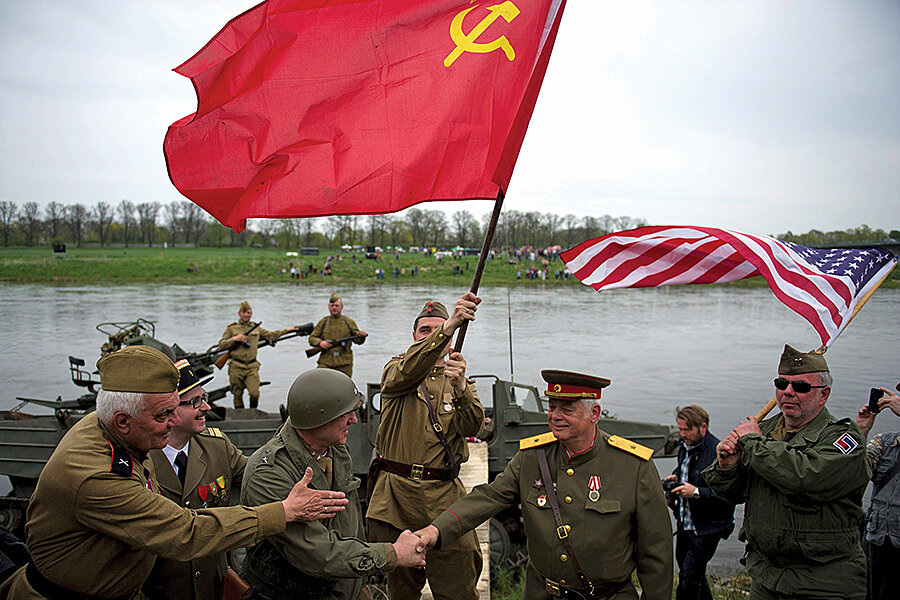What peace makes possible
Loading...
Over the past month, I’ve been immersed in the Monitor archives from the spring of 1945. For the small price of access, you, too, can time-travel and see history as it happened. It’s pretty cool.
Seventy years ago this month, the terrible war in Europe was ending. The horror of concentration camps, of wounded soldiers and civilians, of the displaced and desperate, the size and sweep of the war’s wreckage – all that was just becoming evident.
The Monitor’s Ronald Stead, reporting from Germany, witnessed one of the last battles in Europe on May 7, 1945. American troops were on the west bank of the Elbe River, Russians on the east, and German soldiers and civilians were caught in between. It was, Mr. Stead wrote, “the abject end.... Never in my experience as a war correspondent since hostilities started have I seen such a composite presentation of both the fighting and the suffering it entails for civilians.” But awful as that was, it paled in comparison with the remains of “massacred political prisoners and slave workers I had seen in a barn in Gardelegen a few weeks before.”
From San Francisco on that same day, Roscoe Drummond reported that the “end of the war in Europe is speeding the successful beginning of the United Nations peace machinery.” It wasn’t easy to form the UN, and it has never been perfect. But there was a powerful impetus to structure the New World on consultation rather than confrontation, negotiation rather than aggression.
Two days later, Volney Hurd in Paris was ecstatic. The lights were coming back on in the City of Light: “Last night, for the first time since 1939, the French capital was its own beautiful self again,” he wrote. The flags of the United States, the Soviet Union, Britain, and France flew side by side. “From the street, it looked like a rainbow of promise.”
The point of reviewing history is not nostalgia but appreciation. The price paid to build our current world was enormous. More than 60 million people were killed; cities around the planet were laid waste. But war’s end gave us, as the poet Robert Frost wrote in a different context, a “gift outright,” an opportunity brimming with potential and hope.
While there is still cruelty, suffering, and injustice – in the Middle East, Europe, Africa, Asia, and the Americas – the postwar spirit is about not accepting those problems. The greatest legacy of World War II, the rainbow of promise at its end, has been humanity’s continued commitment to building a better world.
A new Monitor cover story, for instance, examines parenting (click here), one of many issues the Monitor tackles each week. Race relations, economic division, environmental concern, conflict over territory, religion, or ideas – there are thousands of problems that need solving in our world. Travel back a mere 70 years, however, and you will understand how far we have come since the lights came back on. Parents and kids can find the right balance. So can communities and nations. Peace makes everything possible








